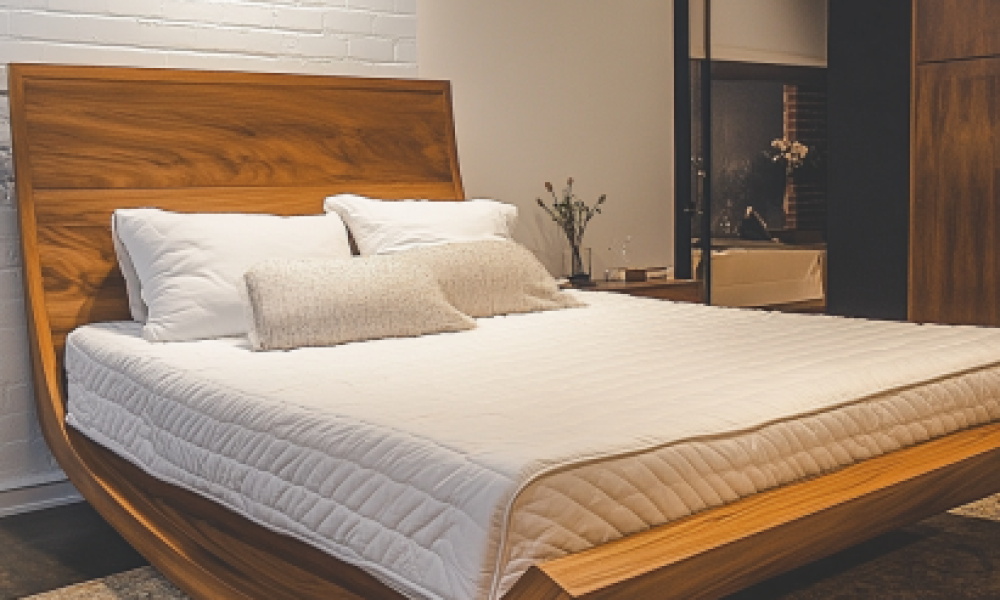How to Incline Your Bed: 5 Easy Hacks for Better Sleep (2025)
Ever wonder how to incline your bed without making your bedroom feel like a hospital room? A small tilt—just 6 to 8 inches—can transform your nights, easing reflux, reducing snoring, and making your spine feel supported. For a full breakdown, check out our Ultimate Sleep Guide.
Key Takeaways
- Inclined sleeping helps with acid reflux, snoring, and spinal alignment.
- Best incline methods: bed risers, wedge pillows, and adjustable frames.
- Keep incline at 6–8 inches to avoid sliding discomfort.
- Left-side sleeping + incline = maximum reflux relief.
- Check with a doctor before making significant sleep changes.

Why Should You Incline Your Bed?
A gentle elevation at the head of your bed can improve more than just comfort:
- Acid Reflux Relief: Elevating your upper body prevents acid from creeping up at night, reducing heartburn symptoms. American Academy of Sleep Medicine
- Better Breathing: An incline helps keep airways open, easing snoring and mild sleep apnea. National Sleep Foundation
- Spinal Support: Sleeping at an angle reduces back strain and can relieve morning stiffness. Sleep Health Journal
Think of it as the comfort of a recliner nap—without leaving your bed.
How to Incline Your Bed (Without Losing the Cozy Factor)
You don’t need pricey equipment to try this. Here are three simple methods:
1. Use Bed Risers for a Subtle Lift
Place risers under just the head of your bed, keeping it angled but stable. Choose risers 6–8 inches tall for best results.
Bed risers: the easiest and most affordable way to add incline.
2. Try a Wedge Pillow
Wedge pillows elevate your torso while keeping hips flat. They’re portable, affordable, and ideal if you can’t alter your bed frame. For more tips, see our guide on how to choose a pillow.

A wedge pillow helps keep reflux at bay without moving furniture.
3. Adjustable Bed Frames
The fancy option: adjustable bases let you raise your head at the touch of a button. They’re pricier but excellent for chronic reflux, breathing issues, or lounging comfortably in bed. Certifications such as Happsy Certifications ensure safe, eco-conscious materials.
Worried About Sliding Down? Here’s the Fix
Sliding is a common fear, but easily managed:
- Stay under 8 inches of elevation.
- Use a firm mattress and non-slippery bedding.
- Place a pillow under your knees for anchoring.
Explore organic bedding options that add friction and prevent nighttime shifting.
Small Changes, Big Comfort
Learning how to incline your bed is an easy experiment. Whether you use risers, a wedge, or an adjustable frame, you may notice:
- Less acid reflux and snoring.
- Better spine alignment and fewer aches.
- Improved sleep quality overall.
For more inspiration, try our 10 sleep hacks for falling asleep faster.
Wrap-Up: Sleep Elevated, Feel Better
At day’s end, your bed should feel like a sanctuary. If you’ve battled reflux, snoring, or restless nights, try adding a gentle incline. Now that you know how to incline your bed, you can test one of these simple methods tonight. Your body—and your sleep—might thank you.
✨ Keep exploring cozy insights in our Ultimate Sleep Guide or browse more tips at Cozy Bed Quarters.
FAQ
Can I use regular pillows to incline my bed?
Not ideal. Regular pillows shift around. Wedge pillows or risers give stable support all night.
Is inclined sleeping safe for everyone?
Mostly yes, but check with your doctor if you have chronic health conditions.
How high should I elevate my bed for acid reflux relief?
Between 6 and 8 inches at the head of the bed works best.
Will inclined sleeping help with snoring?
Yes—keeping airways open reduces nighttime snoring for many people.
Can I combine inclined sleeping with side sleeping?
Absolutely. Left-side sleeping + incline is the best combo for reflux relief.
Related reading from Cozy Bed Quarters
Other reading we found popular























